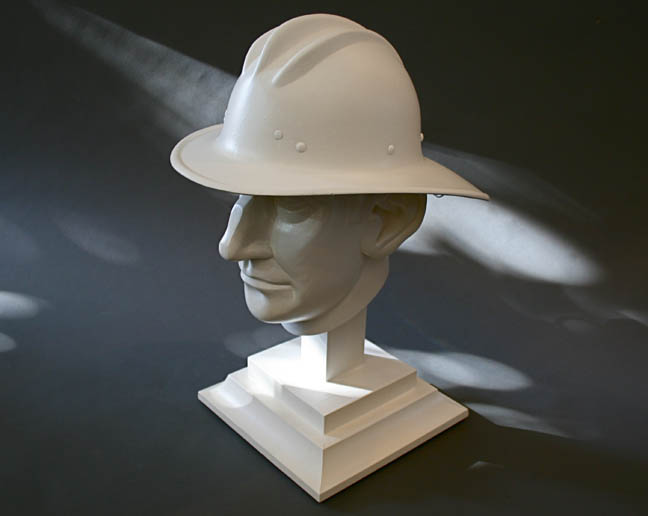

Title: Painted And Hand Carved Wooden Art Hat Head Mannequin
Shipping: $29.00
Artist: N/A
Period: Contemporary
History: N/A
Origin: N/A
Condition: Excellent
Item Date: New
Item ID: 1207
In white paint, behold the Male Hat Mannequin. Exhibiting a remarkably naturalistic style, it features elegant, thin, and somewhat elongated head proportions, resulting in a clean and refined appearance. This life-sized Male Mannequin, crafted from wood, serves as an ideal display for hats, wigs, and accessories in your shop. Presenting an all-wooden, hand-carved head hat sculpture, this piece harkens back to the 19th century when artist-mannequin model dolls were in vogue. Noteworthy value points include a fine natural finish and the rarity of being a grand-size example in hand-carved wood. Truly unique, this art carving stands as a one-of-a-kind masterpiece.
The history of hand-carved wooden mannequins is a fascinating journey through the evolution of artistic representation and practical utility. Dating back to ancient civilizations, the use of wooden figures for artistic and utilitarian purposes has deep roots. Artistic Beginnings: In ancient Egypt, wooden statues were crafted for religious ceremonies, often representing deities or important figures. Greek and Roman artisans used wooden mannequins as tools for sketching and sculpting, providing a three-dimensional reference for their artwork. Medieval and Renaissance Era: Wooden mannequins gained prominence during the medieval and Renaissance periods, serving as anatomical aids for artists striving for realism in their depictions. These early mannequins were rudimentary in design, primarily focusing on basic body proportions. Rise of Art Dolls: By the 17th century, artist-mannequin model dolls emerged, offering more detailed representations of the human form. These dolls were often jointed, allowing for a greater range of poses. 19th Century Innovations: The 19th century witnessed a surge in the use of wooden mannequins for costume and fashion design. Tailors and designers utilized these figures to showcase their creations. Functional Evolution: As the industrial revolution progressed, so did the practical applications of wooden mannequins. They became essential tools in the emerging fields of clothing retail and fashion display. Artistic Expression: Wooden mannequins continued to be used by artists, evolving into detailed sculptures that showcased not only anatomical accuracy but also artistic expression. Contemporary Usage: While modern mannequins are often made from a variety of materials, including plastics and fiberglass, hand-carved wooden mannequins persist as symbols of craftsmanship and tradition. Today, the history of hand-carved wooden mannequins reflects a blend of artistry and functionality, with contemporary artists and designers appreciating the timeless charm and character that these wooden figures bring to their work.
Link: http://en.wikipedia.org/wiki/Mannequin
A jointed model of the human body used by artists, especially to demonstrate the arrangement of drapery. Also called lay figure. A life-size doll, typically articulated and used to display clothing. A life-sized doll with simulated airways used in the teaching of first aid, CPR and advanced airway management skills such as intubation. A virtual human used to simulation to model the behaviour of the human body